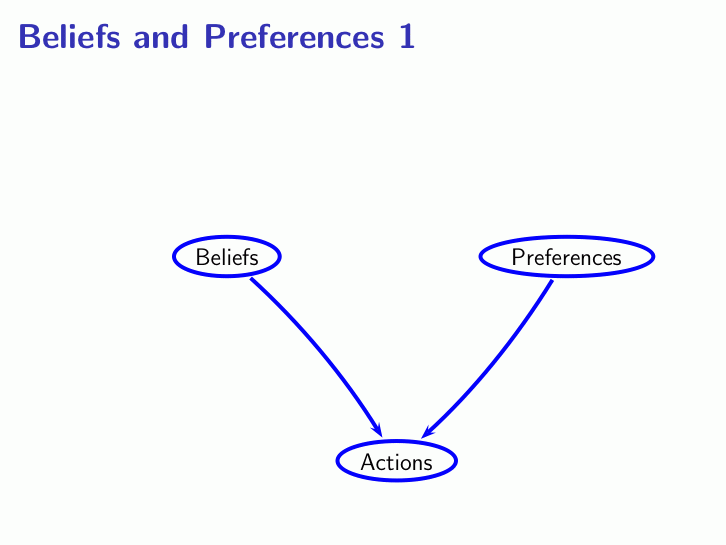Financial crises are often accompanied by large price changes, but large price changes by themselves do not constitute a crisis. Public announcements of important macroeconomic statistics, such as the US employment report, are sometimes marked by large, discrete price changes at the time of announcement. However, such price changes are arguably the signs of a smoothly functioning market that is able to incorporate new information quickly. The market typically finds composure quite rapidly after such discrete price changes.
A crisis feeds on itself
In contrast, the distinguishing feature of crisis episodes is that they seem to gather momentum from the endogenous responses of the market participants themselves. Rather like a tropical storm over a warm sea, they gather more energy as they develop. As financial conditions worsen, the willingness of market participants to bear risk seemingly evaporates. They curtail their exposures and generally attempt to take on a more prudent, conservative stance.
However, the shedding of exposures results in negative spillovers on other market participants from the sale of assets or withdrawal of credit. As prices fall, measured risks rise, or previous correlations break down, market participants respond by further cutting exposures. The global financial crisis of 2007-9 has served as a live laboratory for many such distress episodes.
Modelling endogenous risk
In a new paper (Danielsson, Shin and Zigrand, 2009), we explicitly model the endogeneity of risk. The risks impacting financial markets are attributable (at least in part) to the actions of market participants. In turn, market participants' actions depend on perceived risk.
In equilibrium, risk should be understood as the fixed point of the mapping from perceived risk to actual risk. When banks believe trouble is ahead, they take actions that bring about realised volatility. So, market turmoil results because banks anticipate such turmoil. This is so even if the underlying fundamental risks are constant. Such a fixed point is the “endogenous risk” in our title.
Risk appetite and trading constraints
A model of endogenous risk enables the study of the endogenous propagation of financial booms and distress. Among other things, we can make precise the notion that market participants appear to become “more risk-averse” in response to deteriorating market outcomes. For economists, preferences and beliefs would normally be considered independent of one another.
However, we can distinguish “risk appetite” which motivates traders' actions, from “risk aversion”, which is a preference parameter hard-wired into agents' characteristics. A trader's risk appetite may change even if his preferences are unchanged. The reason is that risk taking may be curtailed by the constraints that traders operate under, such as those based on Value-at-Risk (VaR).
In our framework, all active traders are risk-neutral, but they operate under VaR constraints, which are widespread among financial firms and encouraged by the Basel regulations. The Lagrange multiplier associated with the VaR constraint is the key quantity in our model. It plays two important roles. First, it affects the portfolio choice of the traders. Second, we show that the Lagrange multiplier is related to a generalised Sharpe ratio for the set of risky assets traded in the market as a whole and hence depends on the forecast probability density over future outcomes.
Beliefs and risk appetite are thus linked through the Lagrange multiplier. To an outside observer, it would appear that market participants' preferences change with minute-by-minute changes in market outcomes. Crucially, shocks may be amplified through the feedback effects that operate from volatile outcomes to reduced capacity to bear risk. In this sense, the distinction between “risk appetite” and “risk aversion” is more than a semantic quibble. This distinction helps us understand how booms and crises play out in the financial system.
Endogenous volatility clustering and non-linear dependence
The model solution reveals several suggestive features that are consistent with empirical properties of asset returns found in practice.
The volatility of returns on financial assets generally changes over time, even though the fundamental shocks are constant. This is a well-known phenomenon known as volatility clustering. In the jargon, the model endogenously generates stochastic volatility.
Empirical evidence also suggests that option implied volatilities, and volatilities of volatilities, are shown to be high during market downturns, a result also predicted by our model.
Correlation also emerges where none exists at the fundamental level. During times of financial turmoil, correlations of returns are observed to increase with upward shifts in volatility. This phenomenon is known as non-linear dependence. We show that such features arise naturally in our model. Decrease in risk appetite and higher volatilities coincide with increased correlations, even though the underlying shocks are constant and independent across the risky assets.
Applying the model to financial crises
A common feature of asset price bubbles followed by a financial crisis is that the markets go through long periods of high return amid low volatility, implying high Sharpe ratios. The bubble expands under tranquil conditions. Then suddenly, at the first hint of turbulence, the willingness of market participants to bear risk seemingly evaporates. The price path associated with a bubble exhibits the pattern traders describe as “going up by the escalator but down by the elevator”.
However, the resulting shedding of exposures results in negative spillovers on other market participants from the sale of assets or withdrawal of credit. As prices fall, measured risks rise, previous correlations break down, or some combination of these occurs, market participants respond by further cutting their exposures. The global financial crisis of 2007-9 is strewn with examples of such distress episodes.
Since our model explicitly captures such phenomena, it provides a useful framework for analysing outcomes in asset markets during financial crisis and could be a starting point for better analysis of financial stability.
Prudential banking regulations can be destabilising
By pointing to the endogenous nature of risk, we highlight the role played by risk management rules used by active market participants, which serve to amplify aggregate fluctuations. Although it is a truism that ensuring the soundness of each individual institution ensures the soundness of the financial system, this proposition is vulnerable to the fallacy of composition.
Actions that an individual institution takes to enhance its soundness may undermine the soundness of others. If the purpose of financial regulation is to shield the financial system from collapse, it is a deeply flawed practice to base financial regulation on the “best practice” of individually optimal risk management policies, as is done under the current Basel II capital regulations. Risk is endogenous, and individually optimal risk management makes systemic financial crises sharper, larger, and more costly.
References
Danielsson, Jon, Hyun Song Shin and Jean-Pierre Zigrand (2009) “Risk Appetite and Endogenous Risk”






